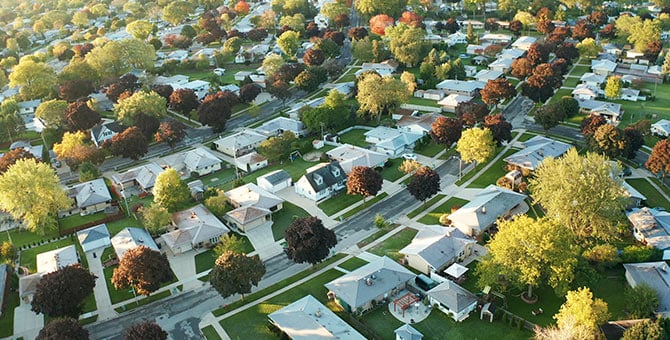The coronavirus pandemic quickly grew from a headwind for banks across the Western United States in the first quarter of 2020. That’s the headline finding from our latest First Glance 12L report. What impacts did it have on real estate lending? Here are 10 things to know about how COVID-19 impacted residential and commercial real estate values, vacancies, and lender outlooks in the first quarter.
Residential real estate
Throughout the San Francisco Fed’s Twelfth Federal Reserve District, there was a sharp decline in home sales. The good news: Home prices held steady or increased. All-in-all, however, mortgage lenders’ optimism about future home price growth dimmed. Here are five things to know.
- The pandemic prompted the volume of existing single-family home sales to sink in April and May, trailing the monthly trough set during the 2008-09 Global Financial Crisis (GFC).
- Pending home sales data hinted at a forthcoming rebound in transactions.
- Home price growth remained steady-to-accelerating in most District states through April.
- Mortgage lender expectations for home prices deteriorated sharply by mid-May, with 42% expecting prices to fall over the coming year.
- Homebuilder optimism swung back into positive territory in June as states reopened and buyer traffic rebounded.
Commercial real estate
Third-party forecasts suggested that demand for, and pricing of, commercial real estate (CRE) will come under pressure. Forecasts reflect an expectation for rents to slide and increased vacancies, as well as higher capitalization rates. SF Fed analysis of forecasts produced by CBRE-EA suggests the following five takeaways.
- CRE vacancy rates will rise sharply across the District during 2020.
- CRE markets in the District to soften across property types, but most severely in the hotel and retail sectors.
- In aggregate, retail vacancies among the District’s major markets are expected to approach 12% by 1Q21, rivaling the peak during the GFC.
- CRE property values are forecasted to decline, with retail properties expected to lose nearly 20% of their value, by 1Q21 (relative to 1Q20) before recovering. Apartment and office property values are also expected to slide, but less than retail.
- Industrial property values are expected to dip less than 2%.
Implications for banks
Real estate demand and pricing are important not only to property owners, but also to the lenders that help finance such assets. Banks based in the Federal Reserve’s Twelfth District reported only modest increases in loan delinquencies through March 2020, and subsequent borrower accommodations and federal stimulus will likely moderate near-term impacts on loan delinquency and loss rates. Still, during first quarter 2020, banks set aside a large amount of reserves to absorb future credit losses, foreshadowing an increase in credit stress down the road.
For additional details, visit the full First Glance 12L report for Q120.
You may also like to read:
The views expressed here do not necessarily reflect the views of the management of the Federal Reserve Bank of San Francisco or of the Board of Governors of the Federal Reserve System.
